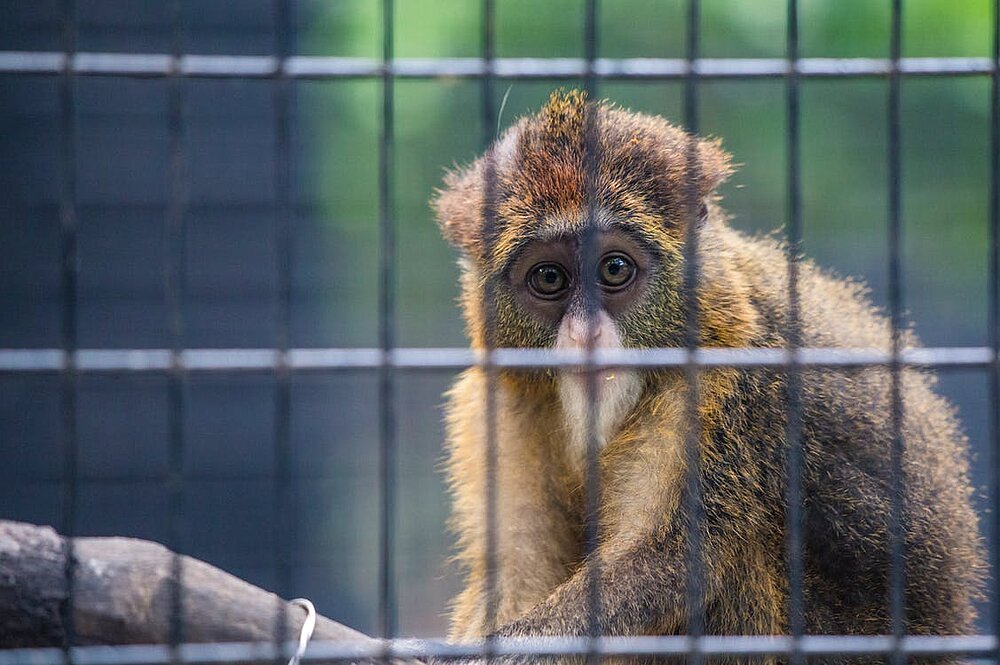Pandemics and human health
In article (1) of the German Medical Association, a pandemic is defined as a disease that spreads rapidly and across regional borders. The "black death" is the term used to describe what is probably the best-known pandemic in human history, the bubonic plague. The causative agent of this infectious disease, Yersinia (Y.) pestis, has been responsible for at least three pandemics, according to an article (2) published by the Robert Koch Institute. The disease is thought to have been transmitted to humans through contact with rodents or their fleas. This this transmission path represents an important common feature of many known pandemics. AIDS, as well as Spanish flu, avian and swine flu for example, share this common characteristic described earlier. Zoonoses represent the majority of emerging diseases and are the cause of almost all known pandemics (e.g. influenza, HIV, COVID-19), according to an article (3) published by the Intergovernmental Platform on Biodiversity and Ecosystem Services, or IPBES. Zoonoses are infectious diseases that can be transmitted from animals to humans. Zoonotic agents include bacteria, viruses, and fungi and other biological entities. In the IPBES article linked here, it is suggested that the most significant reservoirs of pathogens with pandemic potential are mammals (especially bats, rodents, and primates), and some birds (especially waterfowl) and livestock (such as pigs, camels, and poultry).
Thus, from the available information, it can be deduced that especially the contact of humans and wild animals, is reason for the emergence of novel diseases with pandemic potential. Since the industrialization, human have penetrated faster and further than ever into previously untouched nature, in order to make use of it, which has led to increased contact between wild animals and humans. In combination with the advancing globalization, which allows the spread of diseases over the entire globe within a short time, it becomes clear why the topic of pandemics is becoming increasingly important in modern times and represents one of the most noteworthy systemic risks.
Literature
1. Influenza-Pandemie, Bundesärztekammer last accessed on: 19.08.22
2. Ratgeber des Robert-Koch-Institutes zum Thema: Pest last accessed on: 19.08.22
3. IPBES Workshop Report on Biodiversity and Pandemics. IPBES (2020) Workshop Report on Biodiversity and Pandemics of the Intergovernmental Platform on Biodiversity and Ecosystem Services. Daszak, P., das Neves, C., Amuasi, J., Hayman, D., Kuiken, T., Roche, B., Zambrana-Torrelio, C., Buss, P., Dundarova, H., Feferholtz, Y., Foldvari, G., Igbinosa, E., Junglen, S., Liu, Q., Suzan, G., Uhart, M., Wannous, C., Woolaston, K., Mosig Reidl, P., O'Brien, K., Pascual, U., Stoett, P., Li, H., Ngo, H. T., IPBES secretariat, Bonn, Germany, DOI:10.5281/zenodo.4147317 last accessed on: 16.08.22
Solution approaches
Reduction of land use change and agricultural expansion, as well as biodiversity loss with the help of responsible sustainable consumption.

Land use change due to agricultural expansion, deforestation and mass livestock farming, and the associated loss of biodiversity, are weighty causes of the emergence of new diseases with pandemic potential. This is reported in an article (3) of the "Intergovernmental Platform on Biodiversity and Ecosystem Services", IPBES for short.
As mentioned in the introduction to this topic, the majority of emerging diseases and triggers of almost all known pandemics (e.g. influenza, HIV, COVID-19) are so-called zoonoses, which can be transmitted from animals to humans. Increased contact between humans and livestock with wild animals creates new interfaces at which zoonoses can be transmitted to humans. This connection is explained in more detail in another article (4) of "nature" linked here. This increase in the number of interfaces is due to the continued encroachment of humans into wildlife reservoirs and biodiverse areas, such as tropical rainforests, for the purpose of land use.
If one looks critically at the preceding argumentation, one might ask why these connections are of crucial importance just now, for the prevention of pandemics, although humans have been in contact with wild animals and livestock since always.
It is important to note that since industrialisation, human encroachment into previously untouched areas for the purpose of land use change has reached unprecedented levels. As a result, besides the sharp increase in human-wildlife interfaces, there is an immense loss of biodiversity, which is another important reason for the emergence of new diseases with pandemic potential. While many species are becoming extinct, a few others are able to thrive, including animals that have a high potential to serve as host organisms for zoonotic diseases. So reports an article (5) published in 2020 in "nature". Logically, it can be deduced that when pathogens lose their original preferred host organisms, they switch to other potential hosts.
Ultimately, it becomes apparent that actions that promote human encroachment into previously pristine areas for the purpose of land use and the associated loss of biodiversity also increase the potential for pandemics.
In an article (6) by the Union of Concerned Scientists, factory farming, the cultivation of soybeans primarily as feed for factory farming, the cultivation of oil palms, and the extraction of products from the trees such as paper, are cited as the four main drivers of the destruction of rainforests, the most biodiverse areas on Earth.
Those who want to contribute to the prevention of pandemics should be careful not to consume products or support companies that are responsible for the invasion of previously untouched nature. In an article published by the Robert Koch Institute (7), it is pointed out that private travel to remote regions also increases the likelihood that people will come into contact with infected animals.
For this purpose, there are several free apps (8) for the smartphone, which, by scanning the barcodes on the products in the supermarket, quickly and easily display all the information about the ingredients of a product and its sustainability.
Reduction of wildlife trade

As mentioned in the introduction to this topic, as claimed in an article linked here (1), zoonoses represent the majority of emerging diseases and are triggers of almost all known pandemics (e.g. influenza, HIV, COVID-19). In addition to livestock, wild animals are important hosts for a large number of known and an even larger number of unknown zoonoses. Pathogens that can be transmitted from animals to humans.
According to the article (1) of the "Intergovernmental Platform on Biodiversity and Ecosystem Services", the value of the international legal wildlife trade has increased more than fivefold in the last 14 years. It is estimated that global legal wildlife trade generates 7-23 billion US dollars annually. One of the main wildlife trafficking destinations is China. In an article (9) published in Science, the annual profit margin of the wildlife industry in China, is estimated to be about 18 billion US dollars.
An obvious solution would be to ban the entire wildlife trade. But as in many cases, a total radical ban is not a good solution. So agree the authors of the article (9) published in Science. In an article (10) from the journal "Conservation Biology", different motivations for the use and consumption of wildlife products are presented. In addition to financial, as well as deep-rooted cultural and religious motivations, the consumption of wildlife also serves as a food source for poor people in some parts of the world.
Legal measures against wildlife trade and consumption, will conflict with these motives and pose a significant challenge. It is recommended that the various motives be analyzed and understood, and that appropriate measures be taken to curb trade based on this understanding for each motive. For example, in developing countermeasures related to cultural and religious motives, education is likely to play a major role.
Although the development and implementation of countermeasures is primarily a task for governments, a lot can be done if citizens are well informed about the subject. There are a number of sites on the Internet that provide information on how individuals can contribute to curbing wildlife trafficking. Some of these sites (11, 12, 13) are linked below in the "Articles and Papers Collection".
Literature on land use change reduction
1. IPBES Workshop Report on Biodiversity and Pandemics
2. Zoonotic host diversity increases in human-dominated ecosystems
Gibb, R., Redding, D.W., Chin, K.Q. et al. Zoonotic host diversity increases in human-dominated ecosystems. Nature 584, 398–402 (2020). last accessed on: 17.08.22
3. Why deforestation and extinctions make pandemics more likely
Jeff Tollefson. Why deforestation and extinction make pandemics more likely. Nature, Aug. 07, 2022. last accessed on: 17.08.22
4. What's Driving Deforestation?
Union of Concerned Scientists, What’s Driving Deforestation?. Feb. 8, 2016. last accessed on: 17.08.22
5. Zoonotische Infektionen beim Menschen
K. Alpers, K. Stark, W. Hellenbrand, A. Ammon, Zoonotische Infektionen beim Menschen. Robert Koch-Institut, Berlin. last accessed on: 17.08.22
Literature on reducing wildlife trade
1. IPBES Workshop Report on Biodiversity and Pandemics
2. Wildlife consumption ban is insufficient
Wang H, Shao J, Luo X, Chuai Z, Xu S, Geng M, Gao Z. Wildlife consumption ban is insufficient. Science. 2020 Mar 27;367(6485):1435. doi: 10.1126/science.abb6463. PMID: 32217718. last accessed on: 17.08.22
3. Motivations for the use and consumption of wildlife products.
4. WWF: stop wildlife crime last accessed on: 18.08.22
5. WWF: Stopping the illegal wildlife trade last accessed on: 18.08.22
6. 5 Ways You Can Help Civil Society End the Illegal Wildlife Trade last accessed on: 18.08.22







